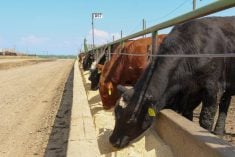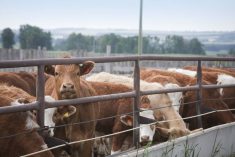U.S. and Canadian inflation reached 40-year highs in June of 2022. Interest rates reached 22-year highs in the summer of 2023. For the past two years, most financial analysts were forecasting a U.S. and Canadian recession at some point in the future.
When the recessions didn’t occur, they delayed the recession forecast by three to six months. It was not a matter of “if” but rather “when” North America would experience a major recession. Other major economies such as Germany were in clear recession mode. Europe has a problem pushing GDP (gross domestic product) into positive territory in good years.
Germany’s energy crisis caused the brakes to gear down on the engineering powerhouse. China has experienced slower economic growth and deflationary pressures. Unemployment is over 25 per cent for Chinese consumers under 30 years old. One just has to look at copper or lithium prices to realize the Chinese situation. North America has stood alone for the most part as the global economy experiences softer growth.
Read Also

Harvest wraps up and fall work begins
At the Eppich famly ranch in western Saskatchewan, the fall harvest was successful with few breakdowns, cows and calves have been sorted and a new tractor has arrived
Beef demand is hard for many producers and industry analysts to understand. For beef, a one per cent increase in consumer spending equates to a one per cent increase in beef demand. Consumer spending composes two-thirds of U.S. GDP. This is the best indicator for beef demand. An old-time cattle feeder once told me if you want to be successful analyzing the cattle market, focus on disposable income for the average U.S. consumer. As a rule of thumb, if U.S. GDP growth is above two per cent, cattle prices trend sideways or upward. If U.S. GDP growth is between one and two per cent, cattle prices trend sideways. If GDP is up less than one per cent, the cattle market tends to soften.
The price of substitutes on the retail shelf has little influence on the demand for beef.
In Canada, the retail meat market is considered artificial because of supply management for chicken. In the U.S., boneless chicken breasts are priced below year-ago levels, but this is not the case in Canada.
Secondly, beef is often used as a loss leader to attract customers. Thirdly, grocery stores don’t sell food, they sell packaging, because the food is such a small portion of actual cost of the product. Energy, labour, rent, packaging and transportation compose a larger portion of the actual cost of the product.
In the dining sector, half of the costs for a restaurant are labour. It’s important to monitor retail movement but I’ll tell you if GDP growth moves under one per cent, beef will start to become backed up and prices on the retail shelf will need to decrease.
Retail prices are the lagging indicator for the cattle market. Wholesale prices are viewed as coincident-to-lagging indicators. Remember, cattle are more than beef. A slower economy results in lower demand for leather, soaps and oils.
The U.S. Federal Reserve (Fed) held its benchmark rate at 5.25 per cent to 5.5 per cent on Wednesday, Dec. 13, for the third meeting in a row. More importantly, most officials penciled in three interest rate cuts for 2024 in their projections, which were released after their two-day meeting. U.S. inflation is moving down faster than the Fed anticipated; wage growth is slowing.
There were four major points from the U.S. Federal Reserve meeting:
- Fed officials are forecasting U.S. inflation to drop to 2.8 per cent at the end of 2023 and 1.4 per cent at the end of 2024. Core inflation is expected to finish 2023 at 3.2 per cent and 2.4 per cent at the end of 2024.
- Fed officials see U.S. GDP growth averaging 2.6 per cent in 2023, 1.4 per cent in 2024 and 1.8 per cent in 2025.
- Fed officials also see U.S. unemployment holding at 3.8 per cent at the end of 2023 and increasing to 4.1 per cent by the end of 2024.
- Fed officials expect three interest rate cuts in 2024 with the first potential decrease in the second quarter of 2024. By the end of 2024, the benchmark rate is expected to be in the range of 4.5 to 4.75 per cent, which equates to three cuts of 25 basis points.
This is a major change from earlier in fall. At previous meetings, the Fed was talking higher interest rates for longer. Its chair, Jerome Powell, stated the Fed would err on the side of raising rates too high and too fast. Inflation was not going to remain high on his watch. A hard economic landing was in the forecast. These comments were well absorbed by financial analysts. Now, the theme from the Fed has changed or even reversed.
It appears the Fed is expecting the economy to return to normal growth rates. This will cause inflation to return to normal levels and the labour market will loosen from historically tight conditions. The economy is moving back to a pre-COVID type of environment. Therefore, interest rates have potential to decline and move closer to normal as well. It’s too early to declare victory on inflation but the “higher for longer” theme has evaporated.

Below we have our GDP projections for 2024. U.S. and Canadian interest rates are coming down. At the time of writing this article on Dec. 17, the Canadian five-year bond yield was 3.272 per cent. This was down 112 basis points from Oct. 19. This is good news for anyone renewing a five-year mortgage. Gas prices are also coming down, which is considered a tax cut for the lower third of the income bracket. In a declining interest rate environment, there is a boom for resources and commodities.
Manufacturing tends to soften, but this economic environment is positive for Canada, assuming the federal Liberals don’t implement adverse policy. For Canada, the worst is behind us. The U.S. Federal Reserve is usually conservative in its forecasts. There is a higher probability that U.S. quarterly GDP growth reaches over two per cent in the latter half of 2024. This is also when beef supplies will be the tightest. There is potential for another bullish run in this cattle market in the fall of 2024.
















